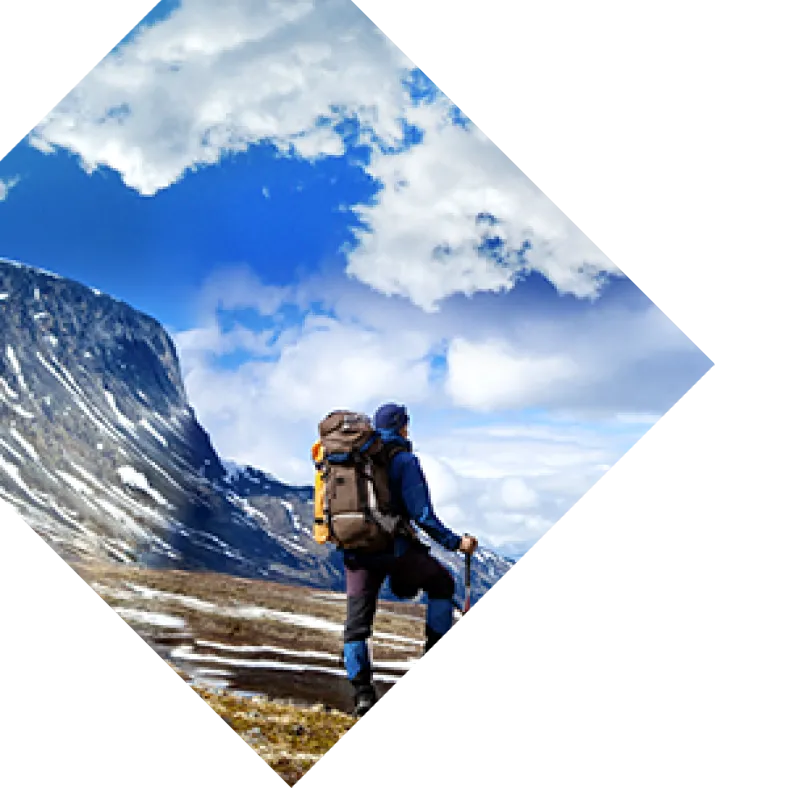I should have been the one who was smart enough to bring a mosquito net for our camping expedition inside Denali National Park and Preserve. After all, as the joke goes, the mosquito is the state bird of Minnesota and I grew up exploring the forests and swimming in the lakes there. I even had a chance to buy a mosquito net at the Riley Creek Mercantile before we took the camper bus all the way to the Wonder Lake Campground. But I didn’t. What was I thinking? The entire time we were there mosquitoes swarmed around us like an Old Testament pestilence. Our only respite came in the form of a Coleman Mosquito Coil that some tourists from Germany gave us. It lasted for all of an hour and then the swarm returned. Don’t get me wrong. Camping beneath the shadows of Denali was the experience of a lifetime, mosquitoes or no. Still, it would have been even better without having to swat them away every waking moment. That’s why I’m creating this exhaustive gear guide. I want to help you plan your trip to Denali National Park and Preserve so you don’t have any regrets. CLOTHING The weather in Denali National Park and Preserve can be a bit unpredictable. According to the reports, we were supposed to experience rain every day we were there, and we were prepared. When I hike or backpack I tend to heat up fairly quickly so I like to wear layers that allow me to adjust on the fly. And I want to make sure the outer layer is both waterproof and breathable. 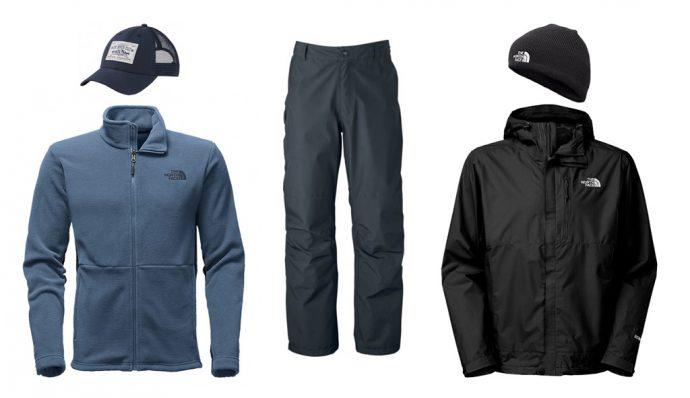
T-Shirt I used a Smartwool Men’s NTS Micro 150 Tee as my primary shirt the entire week. In fact, I even slept in it. There’s no doubt that moisture-wicking fabric is more expensive than cotton, but it dries a lot better because it transports the sweat away from your skin. Fleece Jacket Going light is all the rage and it makes sense. Why carry around excess weight when you don’t have to? But with nighttime lows that can dip down in the 30s, I wanted to make sure I was going to be warm. I went with this lightweight fleece jacket from The North Face and though I only wore it at night, it helped keep me warm when the temperatures dropped. Waterproof Jacket I love the classic look of a plain black jacket from The North Face, but The North Face Dryzzle Jacket is more than a fashion statement. It’s made with GORE-TEX fabric, which means that I can trust it to keep the rain out while allowing sweat to escape. It’s also made with PACLITE® Product Technology, which made it easy to tuck away in my backpack when I wasn’t wearing it. Boxer Briefs and Socks My T-shirt wasn’t the only garment with moisture-wicking fabric that I brought on the expedition. I also wore Smartwool NTS Micro 150 Boxer Briefs and Smartwool Men’s PhD® Outdoor Ultra Light Crew Socks. The socks were thin, but they still provided warmth and cushioning. Waterproof Pants Living in Arizona, I don’t often worry about waterproof pants, but in Denali National Park and Preserve, those pants will come in handy. I wanted a pair to combat wet conditions from the rain, the marshes, and for crossing creeks, so I went with the Cabela’s Men’s Rainy River Pants with GORE-TEX PACLITE® Product Technology. They were a relatively affordable option that provided all the protection I needed. Waterproof Boots and Shoes I can’t say enough about the Salewa Alp Flow Mid GORE-TEX SURROUND® Boots. And yes, let me be the first to admit that I’m singing their praises on the GORE-TEX brand official blog—but it’s true! I got them about a month before we left for Alaska, and went through the normal protocol for breaking in new hiking boots. I wore them around the house, then on short walks, and finally on a few longer hikes into the Superstition Mountains. At the end of the day, they’re so comfortable that I didn’t need to break them in at all. 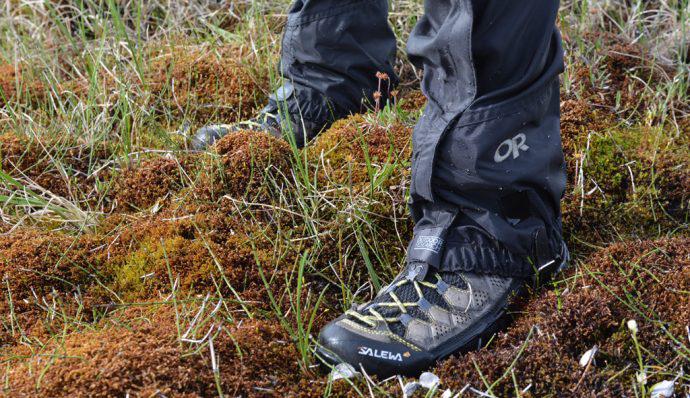
Gaiters Why gaiters? It’s simple. There are a lot of creeks and marshes in Denali National Park and Preserve and waterproof boots are only waterproof if you keep the water from pouring in over the top. Gaiters help protect against seepage and I liked that the Outdoor Research Men’s Crocodiles Gaiters nearly reached my knees. Flip Flops OK, so we weren’t exactly on the beach but when nature calls in the middle of the night, the last thing you want to do is slip back into your hiking boots and lace them up. Flip flops are the perfect solution and I went with Freewaters Tall Boy Flip Flops. Trucker Hat The last thing you want to worry about during a camping expedition is your hair, so I brought two hats: one for the cold weather and one for everyday use. I went with The North Face Mudder Trucker Hat since most of my hiking wardrobe comes from The North Face. And a great thing about a trucker hat is that you can just latch it around to a strap on your backpack when you aren’t wearing it. Beanie I went with The North Face Bones Beanie for warmth, and though I only needed to wear it a couple of times, I was glad that I had it. SLEEP GEAR 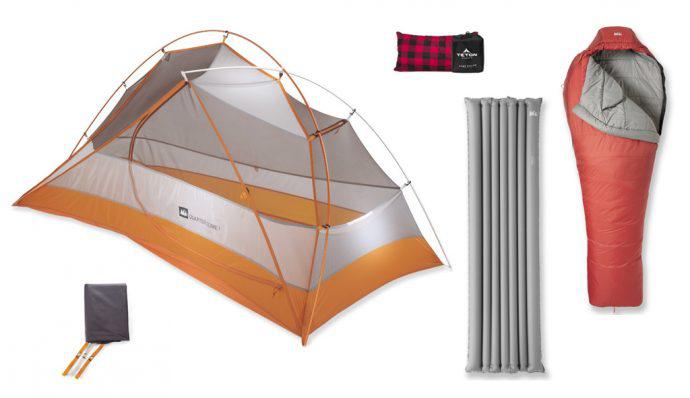
Tent I went with the REI Quarter Dome 1 Tent, but if I’m being honest I should have gone with something bigger. With all the wildlife in Denali National Park and Preserve, I would have preferred to bring my pack inside my tent at night but there just wasn’t enough room. Still, it did the job and only weighed 2 pounds, 2 ounces. Footprint When it comes to camping in potentially wet conditions, a footprint is a must. I certainly don't want to awake to water seeping up through the bottom of my tent. I went with the REI Quarter Dome 1 Footprint that matched my tent. Sleeping Bag The REI Lumen Sleeping Bag provided everything I needed. It comes in the popular mummy fit, is rated for three seasons and temperatures down to 20 degrees Fahrenheit. For those who like to pack light, this sleeping bag weighs 2 pounds, 8 ounces. Sleeping Pad I don’t expect luxurious accommodations when I’m camping, so I extend a lot of grace when it comes to sleeping pads—even though they look and feel a lot like the flotation devices my kids use in the swimming pool. The REI Stratus Insulated Air Sleeping Pad did the job. After all, sleeping on hard rocks would have abysmal. Pillow This may seem like something you could ditch for the sake of room in your pack, but for me, it made the difference between a good night's sleep and no sleep at all. The TETON Sports Camp Pillow provided great support for my neck when I wanted to escape to my tent and read, and it increased my comfort level for sleep at night. Sleeping Mask A sleeping mask is an absolute must if you plan on camping in Denali National Park and Preserve around the time of the summer solstice. Yeah, it felt a bit weird at first, but I would have struggled to fall asleep without my Alaska Bear Natural Silk Sleep Mask. COOKING GEAR AND FOOD 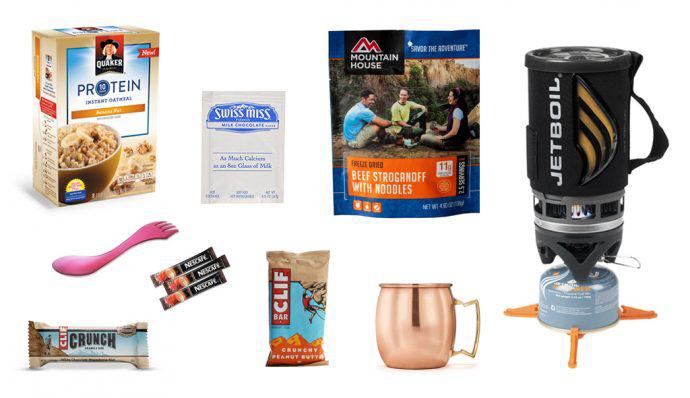
Cooking System I love innovation and each time I fired up my Jetboil Flash Cooking System, I smiled. This amazing bit of technology makes cooking without a campfire absolutely simple. And that’s important since there are limited places you can actually build a campfire in the park. Don’t forget the fuel, though. Just be sure to buy it once you land in Alaska. You aren’t allowed to bring fuel on the airplane. Utensils I highly suggest the Light My Fire Spork if you plan on eating something like Mountain House camp food, because it’s long enough to reach into the pouch without getting your hands covered in sauce. You might want to bring a backup, though. One of the guys I traveled with broke his and eating became a bit of a chore. Mug or Cup It’s not a bad idea to bring a Moscow Mule Copper Mug. No, we didn’t have any ginger beer or mint on hand, but it keeps things like oatmeal, hot chocolate, and instant coffee nice and warm. And it’s durable, too. Breakfast Food and Snacks Eating the same thing over and over can get boring, so I tried to mix it up between Clif Bars and oatmeal. Quaker’s Protein Instant Oatmeal was surprisingly good, and my favorite snack was the Clif Crunch Granola Bars.
- Quaker® Protein Instant Oatmeal (Banana Nut)
- Clif Crunch Granola Bar (White Chocolate & Macadamia Nut)
- Clif Bar (Crunchy Peanut Butter)
Lunch and Dinner Here’s the thing about freeze-dried pouches on the trail: you’re going to get sick of them, not matter how much of a variety you bring. We camped next to people who we feasting on summer sausage and instant potatoes, and you can bet that I’m going to add that to my shopping list the next time I camp. We went with the Mountain House Freeze Dried Pouches, and they weren’t bad. My personal favorite was the beef stroganoff, but make sure that you let them sit long enough to simmer and cook all the way through, otherwise you’ll end up with al dente meals that have chunks of powdery spices floating around. Also, the package says that you’ll get more than two meals out of each pouch but after hiking all day you’ll likely be hungry enough to eat the entire pouch yourself. So plan accordingly, because you never want to find yourself short on food. Here are the flavors we went with:
Coffee and Hot Chocolate Thanks to the Jetboil Flash Cooking System, making instant coffee and hot chocolate was a snap. Both are fantastic for starting the day or warming up at night, and the packets will take up very little room in your pack.
PACK AND HYDRATION 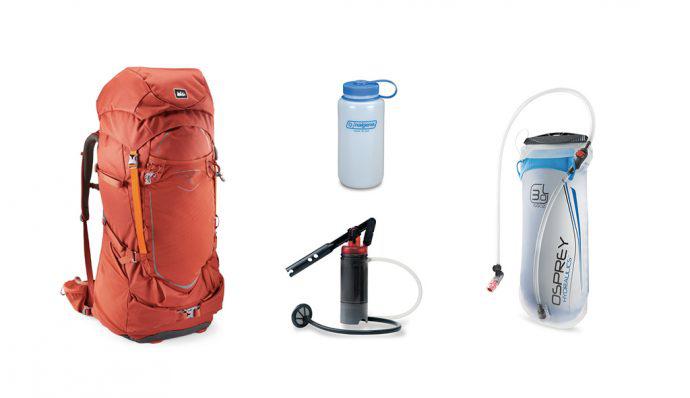
Backpack As much as I wanted to pack light, I ended up with a REI Yosemite 75 Pack. 75 liters is big but I brought a Nikon D7100 camera with three lenses, along with a sketchbook and some pencils and pens. Those took up more room than I was hoping, which is why I needed a larger pack. Water Containers and Purifiers I went with the Osprey 3 Liter Hydraulics Reservoir because I wasn’t sure how often we’d be able to refill our water supply. It fit well in my pack and carried enough water to last nearly three days. Since we were camping, it didn’t make sense to carry our full packs on every trail we hiked, so it’s good to have a smaller container for water. A 32-ounce Nalgene Ultralite Wide-Mouth Water Bottle is the perfect option for day hikes. Even at the Wonder Lake Campsite, which is 85 miles into the park, water is fairly easy to find. You can actually drink the purified water from the sink at the designated wash area, which was a great place to fill up my Osprey 3 Liter Hydraulics Reservoir. However, if you’re heading out into the backcountry you’ll need something like the MSR SweetWater Water Purifier System so you can safely drink the water from the creeks, rivers, and lakes. SAFETY AND PROTECTION 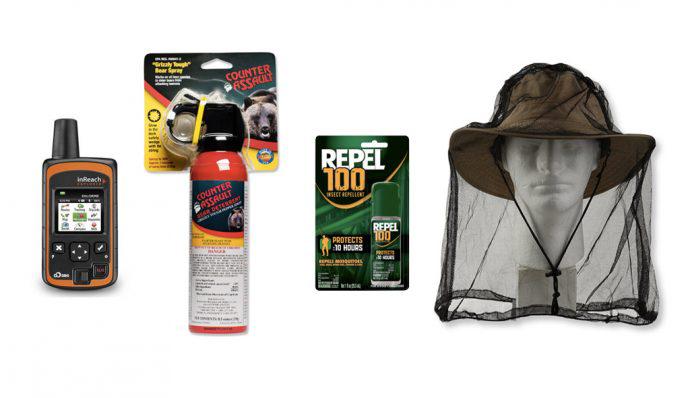
Satellite Communicator More than bear deterrent spray, the number one item you’ll need to keep you safe is a DeLorme inReach Explorer 2-Way Satellite Communicator. Cell service is completely unreliable at best, and non-existent at worst. This device allows you to create a route, drop waypoints, and send and receive text messages so your loved ones back home know you’re safe. There are adjustable tracking intervals that update anywhere from 10 minutes to four hours, which allows you to share your location and GPS coordinates with others. It even has an interactive SOS that connects with DeLorme’s 24/7 search and rescue center. Bear Deterrent Spray My biggest fear leading up to our camping expedition was running into a grizzly bear even though there has only been one reported case of a bear killing a human in the history of Denali National Park and Preserve. But there were 61 reported bear-human encounters in the park from May 20 to September 18, 2015. I didn’t know if we should bring a firearm or if bear deterrent spray would be enough to protect us if we ran into a grizzly bear somewhere in the bush. So I did some research online and found advocates for both. Then I interviewed park rangers, the staff at the Riley Creek Mercantile, native Alaskans, and people who had spent extended periods of time in the Alaska backcountry. Most said that the bear deterrent spray would be enough, so we went with Counter Assault Bear Deterrent Spray. When it comes to grizzly bear safety, the best advice is to keep a safe distance (about 200 yards), but that isn’t always possible. The dense brush offers more than enough coverage for 600-pound grizzlies, and if you’re hiking in the backcountry there is a decent chance you could run into one. We were told to stand tall, get close to one another, and wave our arms so we looked big if we encountered a grizzly bear. If that didn’t work, our next line of defense would be the bear deterrent spray. And if that didn’t work, we were told to play dead. Whatever you do, don’t run because it often triggers an attack. Mosquito Net I opened this article by saying that my biggest regret with our trip to Denali National Park and Preserve was that I didn’t bring a mosquito net. We ran into a scout troop at the Wonder Lake Campsite and they were all wearing a Sea to Summit Head Net with Insect Shield. Bug Repellent In my research, I discovered that both bears and wolves are attracted by the smell of perfumes from laundry detergent, deodorant, and hair gels. So I bought bug spray that didn’t have DEET. That was a mistake. It might not have had an aroma but it didn’t work, either. One of the guys from our group brought Repel 100 Insect Repellent Pump Spay. It worked better than mine, but either way, you’re going to want a mosquito net to keep those pests away. OTHER 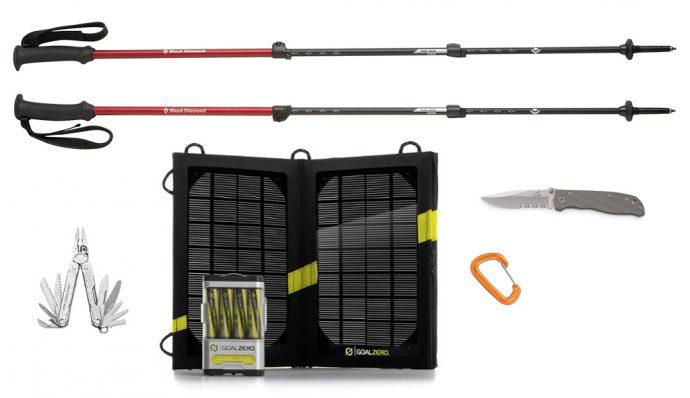
Trekking Poles Some people like trekking poles, some don’t. I’m a proponent because they reduce the impact on your knees. They also help you keep balance on uneven terrain and slippery surfaces, as well as creek and river crossings. And according to experts, you can wave trekking poles in the air to help you look even larger in case of a grizzly sighting. I went with the Black Diamond Trail Back Trekking Poles, which I like because they are adjustable thanks to the locking mechanisms. Multi-Tool A good multi-tool is invaluable when you’re camping. I used my Leatherman Rebar Multi-tool to help fix the zipper that broke on my tent. It has everything you’d need from both a straight and serrated blade to a bottle opener, pliers, and wood saw. Knife When it comes to camping knives, I like the Gerber Air Ranger. It’s a reliable folding knife that's compact, tough, and lightweight. An added bonus is that the partially serrated edge makes cutting through cordage a fairly simple task. Carabineers If nothing else, carabineers are a fantastic way to clip things like bear repellent spray to your belt loop and a Nalgene Ultralite Wide-Mouth Water Bottle to your backpack. I went with Black Diamond Neutrino Wiregate Carabineers. Solar Panel If you’re going to bring a satellite communicator and a digital camera, you’re going to need a way to recharge them. I went with a Goal Zero Guide 10 Plus Adventure Kit Solar Charger, which also comes with rechargeable batteries. 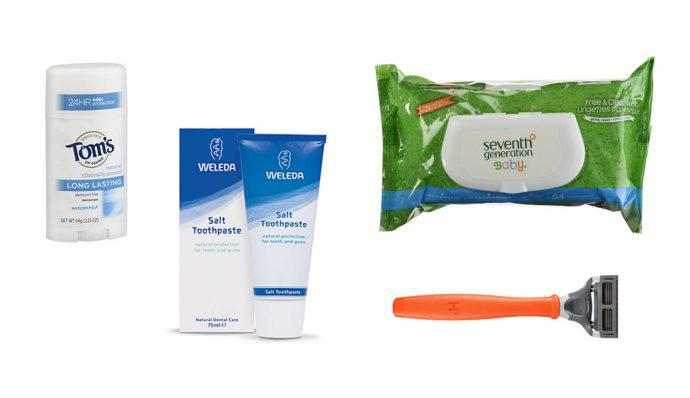
TOILETRIES The biggest thing to remember about toiletries when you’re heading into bear and wolf country is that you want to ensure they don’t have a scent. I planned on wearing hats the entire time so I skipped hair gel and shampoo. I brought salt-based toothpaste and unscented deodorant, as well as unscented baby wipes that I used to take sponge baths. Oh, and I shaved without shaving cream or soap. Yes, it was a bit painful but I was willing to avoid anything with a scent if that meant keeping the predators away. Here’s a complete list of my toiletries:
CAMERA GEAR
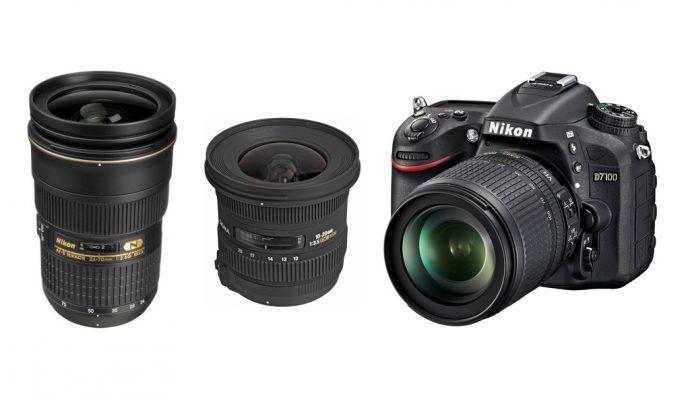
I'm not a professional photographer, but I love photography and am willing to invest in good equipment. I own a Nikon D7100, which is at the higher end of the crop sensor cameras. That means the sensor is smaller than a 35mm film frame. Trust me, I would love to get a camera with a full frame sensor but the price jumps quite a bit and since I don't have to pay the bills with my photography, the Nikon D7100 is still a fantastic option.
Outdoor photographer, Daniel Wildey, told me that if I want to improve the quality of my images the place to invest was in what he termed "good quality glass." Those of us who aren't professional outdoor photographers would call it a lens. He highly recommended the AF-S NIKKOR 24-70mm F2.8G ED lens, because it offers a wide range of flexibility. He also recommended a wide angle to go along with it, and he suggested the Sigma 10-20mm F4-5.6 EX DC lens.
He didn't steer me wrong. Both lenses performed amazingly. The one thing I wish I would have brought was a good telephoto lens that offered better zoom capabilities for wildlife. But when it comes to panoramic images and shots of your buddies, the NIKKOR and the SIGMA were perfect.
More Information About Denali National Park and Preserve If you're looking for more information about an upcoming adventure you're planning for Denali National Park and Preserve, be sure to read the following:

